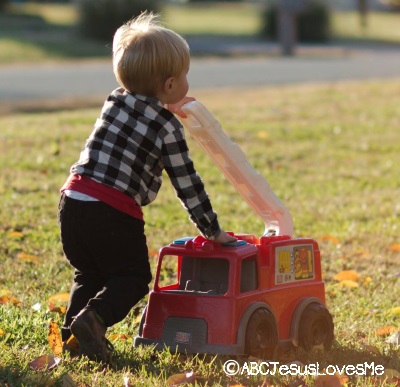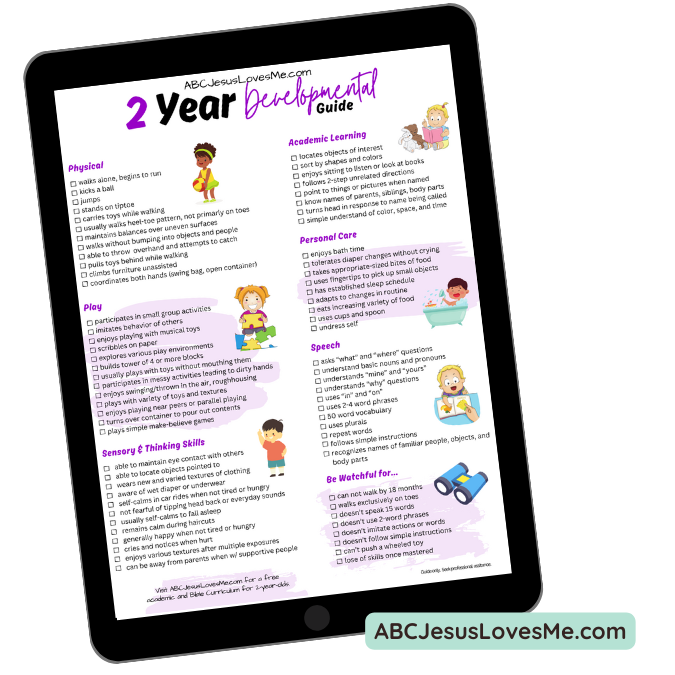
Navigating the exciting journey of a 2-year-old's development, spanning from 24 to 36 months, is a dynamic adventure filled with exploration and growth. This meticulously crafted developmental checklist is designed to guide you through the milestones and potential considerations in your child's transformative months.
As the cornerstone of the ABCJesusLovesMe 2 Year Curriculum, this checklist serves as a comprehensive roadmap, providing insights into a child's typical development during this crucial stage. Whether you're an enthusiastic teacher or a devoted parent, explore key developmental areas with this tool. Utilize it effectively, and if any questions arise, seek professional guidance for a deeper understanding of your child's unique developmental journey.
Scroll down for a FREE printable checklist.

Grab your free 2-Year Development Checklist now! Stay proactive in monitoring your child's development.
Always consult with a professional with any concerns.
This article information is pulled from the following sources as well as many years of training. This information is provided as a guide only. Because every child is different consult your pediatrician as this list is a generalization.